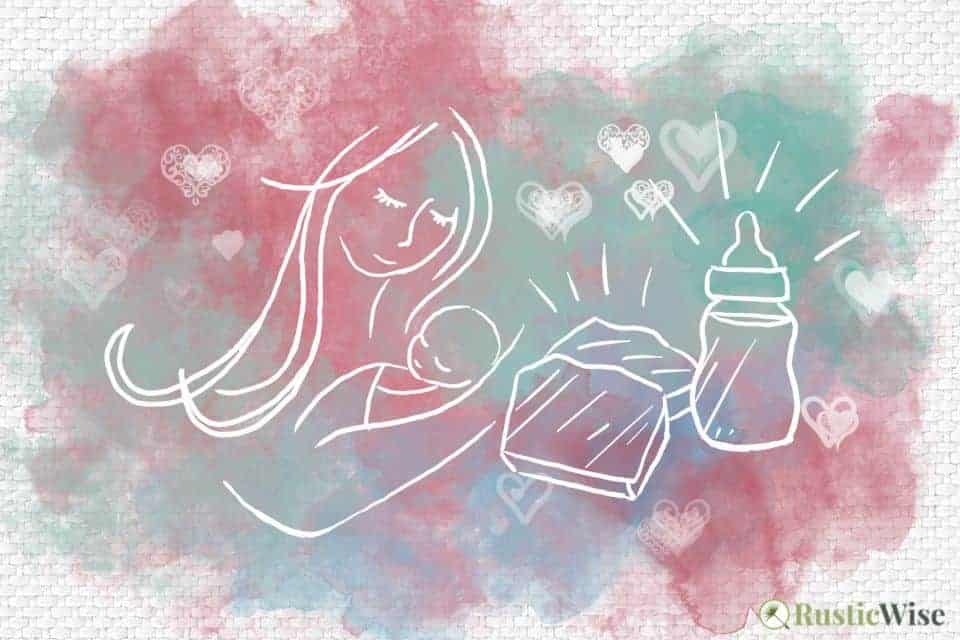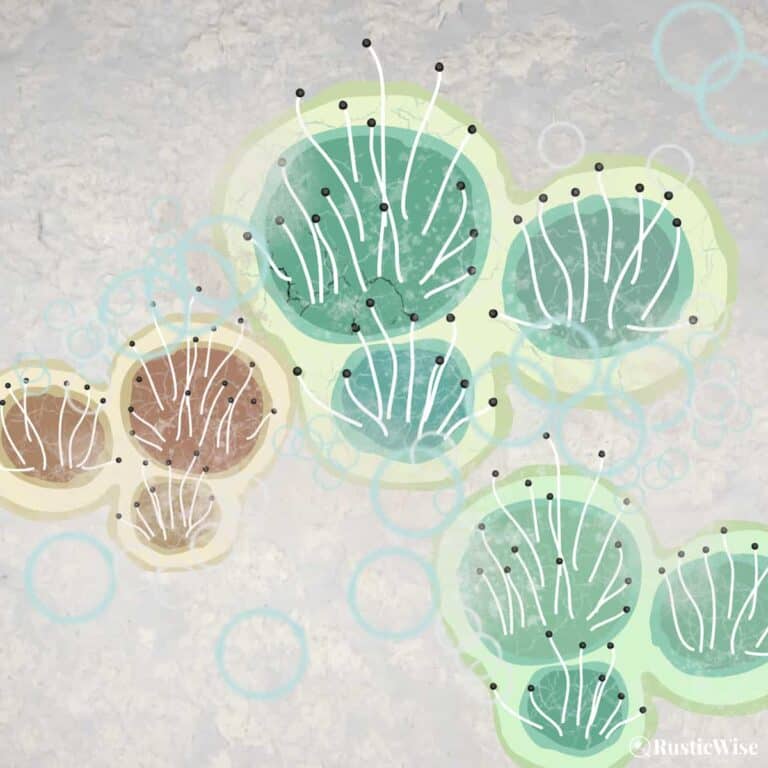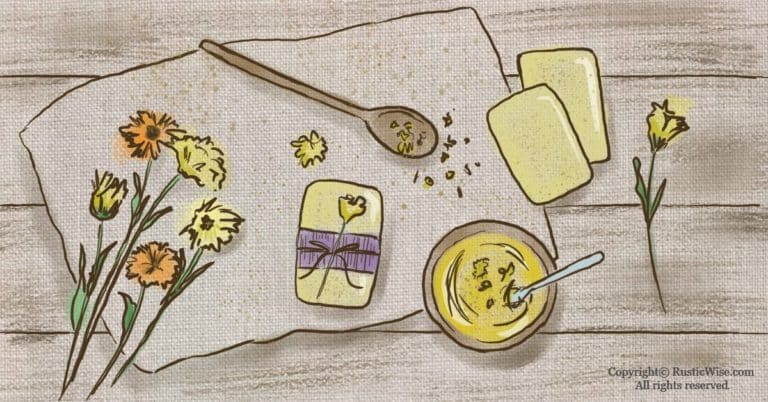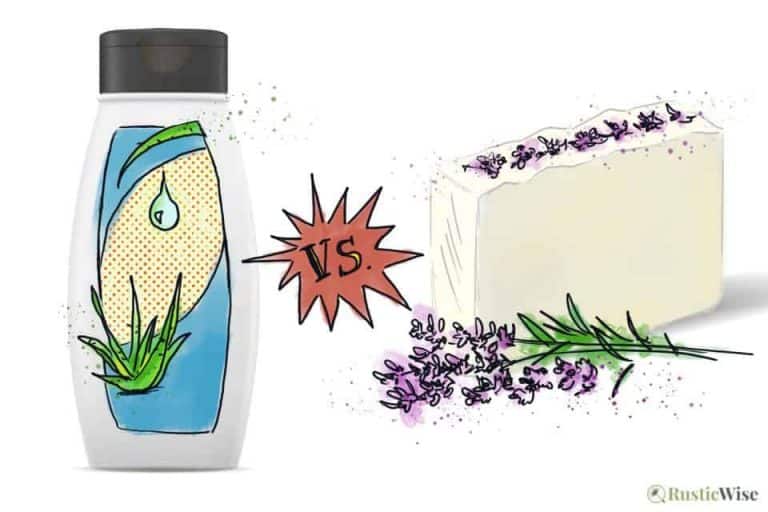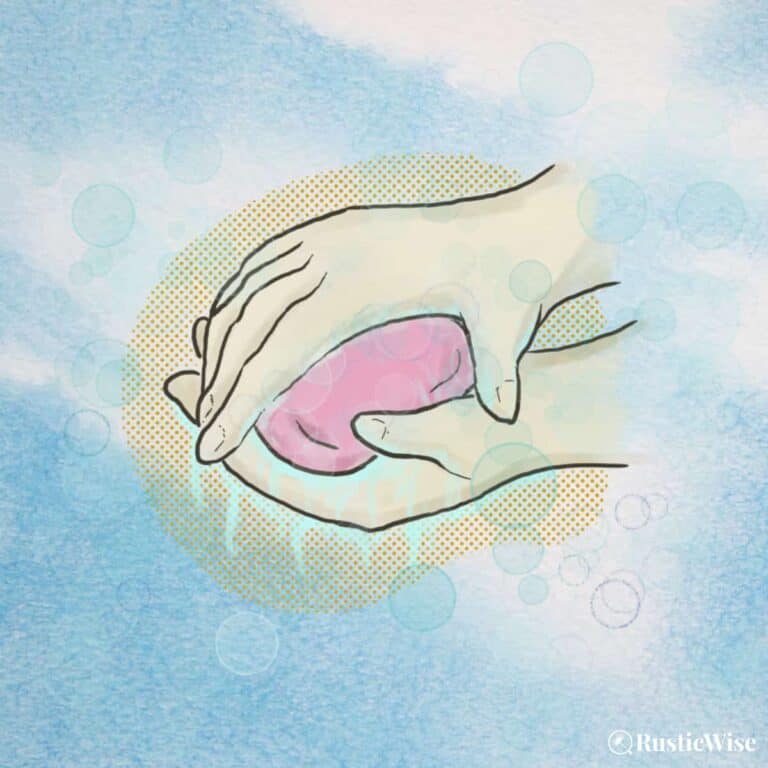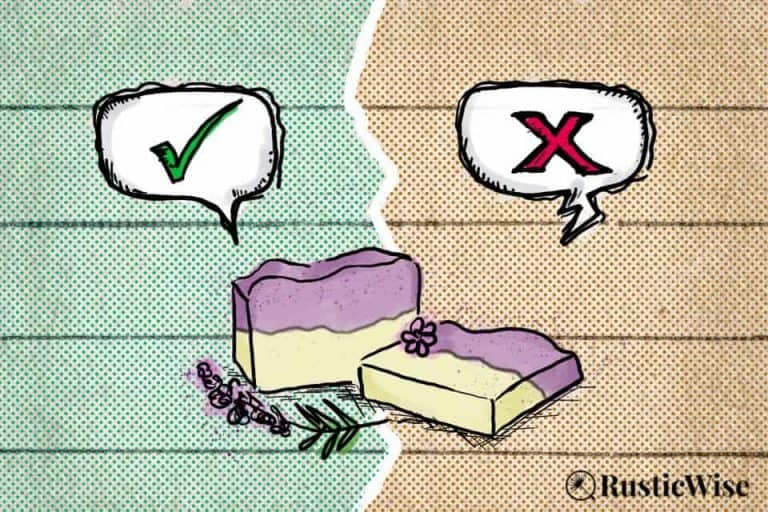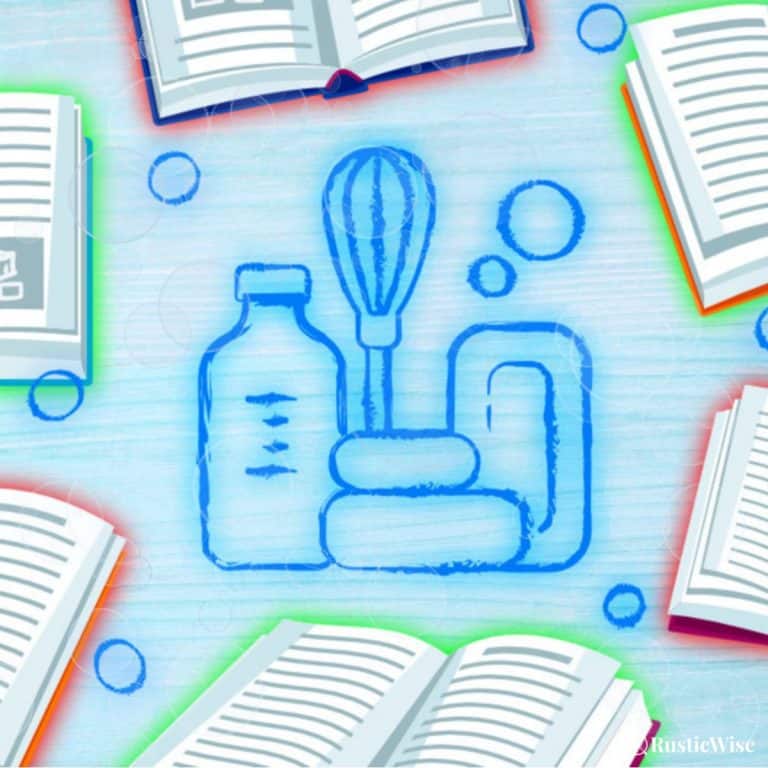Are There Any Real Breast Milk Soap Benefits? Here’s How To Make Your Own
Breast milk, or mother’s milk, is also called “liquid gold” for its amazing abilities to nourish an infant. Pack with vitamins, healthy fats, and protective properties, breast milk can also be applied topically to heal a variety of skin ailments. Many have made natural soaps using mother’s milk. Are breast milk soap benefits for real, or is it all hype?
There are reports of some enterprising women selling soaps made with their own breast milk claiming it’s a beauty cure-all. First off, if you’re buying DIY soap made from someone else’s breast milk, don’t do it—there are potential health risks.
The U.S. FDA says, “When human milk is obtained directly from individuals or through the Internet, the donor is unlikely to have been adequately screened for infectious disease or contamination risk.”¹
While breast milk has many healing properties, does the soap made with breast milk contain any of the benefits? Read on to learn what breast milk does in homemade soap, any potential benefits, and how to make your own DIY breast milk (using your own, of course!).
What’s in breast milk?
Colostrum (aka liquid gold) is the thick, creamy milk women make during pregnancy, and the first few days after giving birth. It’s packed with antibodies and nutrients that both protect and nourish the baby.
After colostrum, mothers produce mature milk (after 3–5 days) which matches exactly what babies need in order to grow healthy and strong.²
Here’s a breakdown of what’s in human breast milk:
- Protein: Contains roughly 60 percent whey protein and 40 percent casein protein. These special proteins protect against viruses, bacteria, and allergens. It also promotes healthy gut bacteria and has anti-inflammatory properties.³
- Fats: Contains healthy fats including long-chain fatty acids.³
- Vitamins: Mother’s milk contains a plethora of both fat-soluble and water-soluble vitamins. You’ll find vitamins A, C, D, E, and K, plus riboflavin, niacin, and pantothenic acid.³
- Carbohydrates: This comprises mostly of lactose, which helps ward off bad bacteria.³
And the most special component of breast milk is the leukocytes.
The American Pregnancy Association says, “Leukocytes are living cells that are only found in breast milk. They help fight infection. It is the antibodies, living cells, enzymes, and hormones that make breast milk ideal.”
“Leukocytes are living cells that are only found in breast milk. They help fight infection. It is the antibodies, living cells, enzymes, and hormones that make breast milk ideal.”
—American Pregnancy Association

Reasons to make breast milk soap
Got milk? Or more accurately, got extra milk?
Years ago, when I was breastfeeding my two little ones, my freezer was jam-packed with bags of frozen breast milk. Milk that the little hungry hippos could never finish before the expiration date.
So, if you have used frozen milk at home, making DIY breast milk soap is something to consider! Instead of throwing out extra breast milk (all that work, all those nutrients!), make something useful out of it.
Breast milk is high in fat, which makes it a great type of milk to use in soap making. It adds a lovely creaminess similar to goat’s milk, and is highly moisturizing—perfect for those with dry skin, or itchy skin.
Is breast milk good for the skin?
Besides being a source of nutrients for infants, the application of breast milk topically to skin has many benefits.
Mother’s milk is commonly used in many developing African and Asian countries as a traditional and economical way to treat chapped, sore nipples, and skin infections.⁴
Studies show that topical application of expressed breast milk to the skin may help treat many ailments, including:⁴
- Atopic eczema
- Diaper rash
- Diaper dermatitis
- Umbilical cord separation
One of the best reasons to apply breast milk topically to skin is there’s no allergy risk (as compared to other commercial medicines).⁴
Rich in antibodies, breast milk also contains epidermal growth factor (EGF), and erythropoietin, which may help to encourage healing of skin cells and healthy growth.⁴
Mother’s milk also contains beneficial bacteria and enzymes which have anti-infectious properties.⁴
The takeaway: Breast milk contains natural moisturizers that help soothe, protect, and moisturize the skin. You can use breastmilk to clean your face and body.
Breast milk soap benefits
Now that we’ve gone over all the benefits of liquid gold when applied to the skin, here’s the iffy part—do any of those healing antibodies, enzymes, and leukocytes remain in the finished soap bars?
I highly doubt it. (I have found no studies supporting this.)
The homemade soap making process involves the use of lye which can destroy some beneficial properties of any fats, oils, butters, and milks used.
Before you throw in the towel, all hope is not lost!
Liquid gold, when used as an ingredient, still adds skin-loving properties to your bar of soap. When added to your soap, breast milk is like a super-nourishing goat’s milk.
- Nice lather: Milk contains plenty of sugars (which creates lather in soap),
- Creamy texture: Because of the high fat content in breast milk, you’ll get a lovely creamy and silky soap.
- Rich and moisturizing: If you have dry or sensitive skin, milk-based soaps provide plenty of skin nourishing agents.
- Soothe itchiness: Skin conditions like baby eczema may benefit from the boost of moisture, making it less prone to itchiness.
- Gentle cleanser: The lactic fatty acid in milk gently cleanses the skin without stripping it of natural healthy oils.
If any of the healthy compounds of mother’s milk shine through in the finished soap, then it’s a bonus! But you’ll still have a good bar of soap on your hands, regardless.
Who can use breast milk soap?
Many mamas make breast milk soap intending to use it on her baby. But you can share this special liquid gold soap with all members of your immediate family, from babies and young children to grownups.
Is breast milk soap safe to use?
Yes, breast milk soap is safe to use provided it’s made with your OWN milk.
As mentioned above, using breast milk from another person comes with a host of potential problems. Often there’s no proper screening of those who donate milk. The milk may have been improperly stored or packaged. Infectious diseases, contaminants and drugs can all pass through to the milk.
And if that’s the case, someone else’s possibly contaminated BM isn’t exactly a substance you want to be rubbing over your skin (or your baby’s skin).
Here how NOT to make breast milk soap
After looking online, I found several people teaching you to make BM soap using the melt and pour method.
Please DONT make breast milk soap using the melt and pour method! Cutting up a pre-made soap base, melting it and adding breast milk will only make a rancid bar of soap. Sure, it’ll look fine at first, but after a few short weeks, it’ll quickly go rotten.
In the next section, we’ll go over how you can make your own milky soap using the cold process method. When made this way, the milk will properly saponify (turn to soap), and you won’t have a stinky bar after a few weeks.
If properly stored, most natural cold process soaps can last 1–2 years, depending on the type of oils used.
How to make breast milk soap
When working with any type of soap recipe, you want to prevent overheating as this will scorch the milk by turning it orange and leaving an unpleasant smell. You’ll also destroy even more of the nourishing properties of milk this way!
If this is your first time making cold process soap, please read up on lye safety first! Yes, we have to use sodium hydroxide lye to properly turn all oils (and milk) into soap that won’t rot. And no, there won’t be any active lye in the finished soap if it’s made correctly!
Make sure you round up all your soap making supplies, wear some safety gear (protective eyewear and gloves), and work in a well-ventilated room!
I found this recipe on YouTube from a soaper who is making cold process soap properly (see link in the References below). I took some notes and jotted down the recipe from the video which I’ll share with you.⁵

Credit: 123RF.com
DIY Breast Milk Soap Recipe with Colloidal Oatmeal
This recipe combines mother’s milk with colloidal oatmeal, which is great for soothing eczema. It uses olive oil, safflower oil, and sunflower oils which are high in moisturizing oleic acids. It also has coconut oil which adds hardness, cleansing properties, and a fluffy lather.
You can add a few drops of essential oil, but this is optional. If planning to use on babies, make sure any essential oils you use are skin-safe. Lavender essential oil is generally as safe bet. You could always make a fragrance-free soap if you prefer.
This recipe replaces any distilled water with breast milk (a straight substitution).
Note: It’s important to soap at cooler temperatures to avoid scorching the milk. If your lye solution turns orange, or brown, you know your lye mixture is too hot!
Supplies:
- Digital kitchen scale
- Thermometer (digital, infrared, or candy thermometer)
- Immersion blender (stick blender)
- Stainless steel saucepan for melting the coconut oil
- A bowl for measuring the liquid oils into
- Heat-safe jug for the lye solution. Avoid using glass as it may shatter over time. Look for plastic containers with #5 on the bottom, or a stainless steel container.
- Rubber/silicon spatula for stirring and scraping
- Loaf soap mold or silicone mold
- Safety gear (goggles and gloves)
Yield: Roughly 2 pounds of soap
Ingredients:
Lye solution:
- 7 ounces expressed breast milk
- 3.12 ounces sodium hydroxide lye
Hard oils:
- 7.5 ounces coconut oil
Soft Oils:
- 7.5 ounces olive oil
- 4 ounces sunflower oil (high oleic)
- 3 ounces safflower oil (high oleic)
Optional:
- 10 drops of Vitamin E oil
- 2 tablespoons ground colloidal oatmeal (gentle exfoliant)
- 0.96 ounces lavender essential oil
- The night before you make soap, measure breast milk by weight. Pour milk into silicone molds or ice cube tray to freeze overnight. This helps keep the milk cold and prevents overheating.
- Place the frozen breast milk into a heat-safe jug. Measure lye into a separate container. Slowly add the lye flakes one scoop at a time to the frozen milk. Continue to gradually mix the lye with the frozen milk. The mixture will warm up. This process should take several minutes.
- Measure soft oils into a container. Add vitamin E to the soft oils.
- Measure coconut oil and place in saucepan. Melt the coconut oil on stovetop over low heat.
- Add the soft oils to the coconut oil and combine well.
- Let the temperature of the oils and lye mixture cool to about 80–90 degrees Fahrenheit (26–32 degrees Celsius).
- Pour the lye mixture into the oils.
- Add the ground oatmeal to the mixture.
- Use an immersion blender (stick blender) to bring mixture to trace.
- Optional: add your essential oils and mix.
- Pour into silicone molds or loaf mold.
- After 48 hours, unmold the soap. If it’s too soft, wait another day or two.
- Cut the soap (if using a loaf mold). Allow soap to cure for 4 to 6 weeks.
Enjoy your homemade moisturizing milk soap!
Ideas on what to do with expired breast milk (besides making soap)
Besides making breast milk soap, there are other ways to make use of that liquid gold. Since these other methods don’t involve the use of lye, you’ll enjoy more of the nourishing properties of BM!
- Add some milk to a warm bath for a nourishing soak.
- Make homemade lotion.
- Apply a small amount onto dry, cracked skin.
- Make a soothing milk face mask.
- Apply milk to soothe baby’s cradle cap.
Related questions
Does breast milk soap smell like breast milk?
No, the finished BM soap has a neutral aroma that doesn’t smell like breast milk at all. Once the oils and milk have undergone saponification, you’re left with a bar of soap that’s virtually fragrance-free (if you skipped the essential oils).
New to making soap? 🧼❓
👉We have a fantastic overview on the whole soapmaking process here: read our Timeless Guide To Soapmaking.
If you would like to see our soapmaking posts organized by topic type, see our Soapmaking Collection.

References
- U.S. Food & Drug Administration, Use of Donor Human Milk, https://www.fda.gov/science-research/pediatrics/use-donor-human-milk. Accessed February 2022.
- U.S. Department of Health and Human Services, Your Guide to Breastfeeding, https://uhs.berkeley.edu/sites/default/files/wellness-womenshealth_breastfeedingguide_0.pdf. Accessed February 2022.
- American Pregnancy Association, What’s In Breast Milk?, https://americanpregnancy.org/healthy-pregnancy/first-year-of-life/whats-in-breastmilk/. Accessed February 2022.
- Witkowska-Zimny, Malgorzata et al. “Milk Therapy: Unexpected Uses for Human Breast Milk.” Nutrients vol. 11,5 944. 26 Apr. 2019, doi:10.3390/nu11050944.
- Alicia Arroyo, Breast Milk Soap Handmade Cold Process, https://youtu.be/JRwuqDm_bR0. Accessed February 2022.

Author: Theresa Tesolin
Theresa is co-founder of RusticWise. She helps people unleash their inner DIY spirit by encouraging them to get dirty and make or grow something from scratch.

